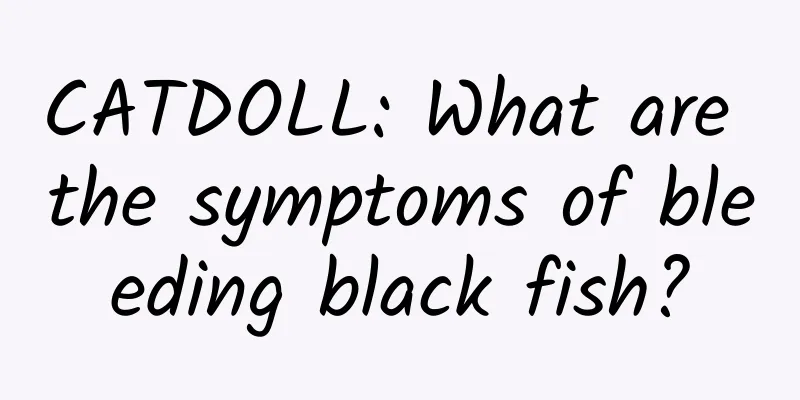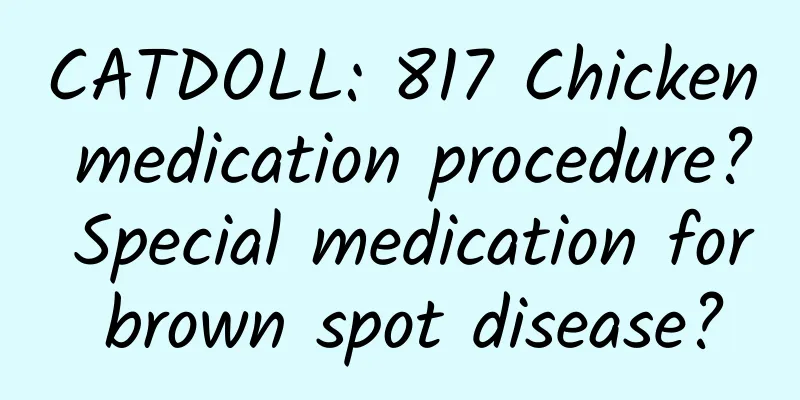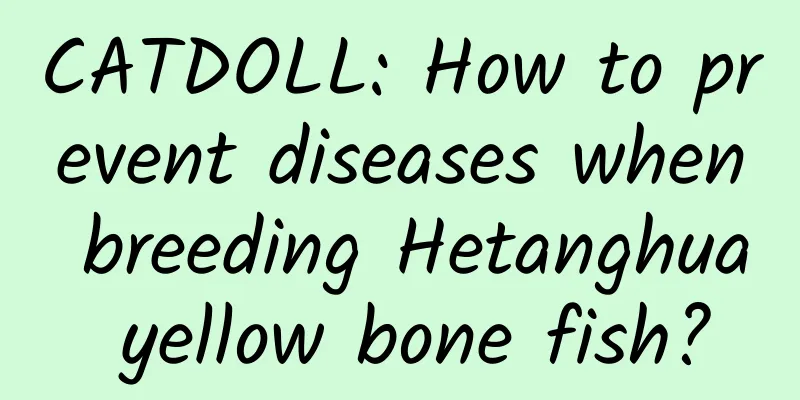CATDOLL : CATDOLL: What are the symptoms of bleeding black fish?

|
Snakehead fish is also known as black snakehead. Common diseases and prevention techniques of black snakehead: 1. Bleeding disease 1. Epidemic situation: Hemorrhagic disease is a common disease in the cultivation of black snakehead fish and adult fish farming. It has a high incidence rate and is easy to cause Large numbers of fish die. July to September each year is the main epidemic season for this disease. The suitable water temperature for epidemic is 27℃~30℃. Due to high stocking density, deteriorating water quality, low dissolved oxygen in water, low transparency and other reasons, this disease often breaks out. 2. Symptoms: The fish has hemorrhagic spots at the base of the fins, abdomen, tail, etc., the eyeballs are protruding, and there are hemorrhages in the eye sockets. Dissection shows that there are block and punctate hemorrhages in the liver, no food in the intestines, and congestion in the intestinal wall. 3. Prevention and treatment: (1) Raise the water level, increase the frequency of water changes, and keep the water fresh. (2) During the epidemic season, regular use of quicklime, strong chlorine, dibromocyanine, chlorine dioxide and other disinfectants dissolved in water to spray the entire pool for disinfection. Use it once every half a month, alternating between several disinfectants, which has a certain preventive and therapeutic effect. 2. Leukoderma 1. Epidemic situation: The summer flower species that mainly harms the black snakehead fish are prevalent from June to August each year. They mainly occur before and after the summer flower ponds are divided. Due to careless operation, collision with fish bodies or deterioration of water quality, especially the addition of manure that is not fully fermented, pathogens are more likely to spread. Fish are easily infected with this disease during breeding and reproduction. The mortality rate is high, reaching more than 50%, and its course is short, with only 2 to 3 days from onset to death. 2. Symptoms: As the disease progresses, it spreads rapidly. In severe cases, the tail fin of the diseased fish rots or becomes incomplete, and the diseased fish swims unbalancedly, with its head pointing downward and its tail pointing upward and perpendicular to the horizontal until death. 3. Prevention and treatment: For fish ponds with disease, 1ppm bleaching powder (containing 30% effective chlorine) or 0.3ppm chlorine dioxide or other disinfectants can be dissolved in water and sprayed throughout the pond. 3. Ascites 1. Epidemic situation: This disease is one of the most serious bacterial diseases in recent years. It is highly contagious, has an acute onset, and a high mortality rate. The main onset period is summer and autumn when the temperature is high, and the water temperature during the peak epidemic period is 20℃~32℃. 2. Symptoms: The diseased fish do not eat and their body color turns black. They mostly swim on the water surface beside the pond bank and are not afraid of people. Most of the diseased fish have water accumulation under their skin and erect scales; their abdomens are swollen and their anuses are red and swollen. Dissection shows that the ascites is clear or light red, the liver is earthy yellow and scurvy, and the intestines are bleeding. 3: Prevention and control: The strategy of early prevention and early treatment should be adopted. Disinfectants should be placed in the pond regularly, and medicated bait should be fed regularly. The prevention and control should adopt a combination of external disinfection and internal administration. External disinfectants such as strong chlorine, chlorine dioxide or dibromocyanine should be sprayed throughout the pond. Oral administration of fluphenazine or oxytetracycline plus the Chinese herbal medicine formula "Liver and Kidney Kangning" mixed with bait should be taken orally for 3 to 5 consecutive days. The actual treatment effect is better. 4. Saprolegniasis 1. Epidemic situation: It mainly occurs during the hatching stage of fertilized eggs and fry of snakehead fish. Due to poor water environment or low water temperature (15℃~20℃), especially on rainy days, sudden infection can cause the death of a large number of fertilized eggs and fry. Most of the fungi are saprophytic, and the disease is mostly caused by capture, transportation, and invasion by surface parasites. 2. Symptoms: After the mycelium invades the body, it spreads and expands, growing outward into wooly mycelium, which looks like white wool. The diseased fish will have increased mucus on the surface of the body, become irritable or dull, have a slow appetite, and eventually become emaciated and die. 3. Prevention and treatment: (1) Strictly disinfect the hatching pool with drugs, keep the water in the hatching pool fresh, do not remove eggs from the water, and be gentle when catching and transporting the fry. Soak the fish in 5% salt water for 5 to 10 minutes before releasing the fry to prevent the occurrence of this disease. (2) Spray 0.3-0.5 ppm of methylene blue diluted in water throughout the pond for 2 consecutive days for better results. 5. Ichthyophthirius 1. Epidemic situation: This disease is prevalent in spring and autumn. There is no strict selectivity for the age of the black snakehead. Ichthyophthirius is transmitted by cysts and larvae; the invasiveness of newly hatched larvae is strong, which gradually weakens with the passage of time. The water temperature is 15℃~20℃ The most invasive. 2. Symptoms: The body surface, fins and gills of the diseased fish are covered with white spots of worms and cysts, which are visible to the naked eye. In severe cases, the fish body is covered with a layer of white film. The diseased fish reacts slowly in the water, floats on the water surface, and rubs against solid objects from time to time. The sick fish had difficulty breathing and died. 3. Prevention and control: Use quicklime to thoroughly clean and disinfect the fish pond to kill the parasite cysts; and control the stocking density appropriately. Strengthen feeding and management to improve the physique. Spray 0.3-0.5ppm methylene blue throughout the diseased fish pond for 2 consecutive days. 6. Trichodiniasis 1. Epidemic situation: It mainly harms the fry and fingerling stage of snakehead. It can occur all year round, but is more prevalent from April to July, with a suitable temperature of 20℃ to 28℃. The disease is prone to occur in small ponds, shallow water, poor water quality, insufficient bait, overstocking, and continuous rain. 2. Symptoms: The diseased fish have increased mucus, and the fry may show symptoms of "white head and white mouth". The diseased fish swim slowly, and some roll and spin in the pond water. The fish become emaciated and die of breathing difficulties. Microscopic examination of the gill filaments and body scrapings of the diseased fish can reveal a large number of wheelworms, and diagnosis must rely on microscopic examination. 3. Prevention: Spray the whole pond with 0.7ppm copper sulfate. If it is the hot season from July to August, reduce the concentration of copper sulfate appropriately and spray for 2 consecutive days. This method can effectively kill wheelworms on the fish body and gills. 7. Sporozoites 1. Epidemic situation: The peak incidence occurs mainly in the adult fish stage, i.e. in autumn, winter and spring every year. 2. Symptoms: Parasites on the fish's head, fins and body surface, forming milky white cysts of various sizes visible to the naked eye, shaped like rice grains, with congestion and bleeding at the parasitic sites. The number of cysts on the diseased fish ranges from dozens to hundreds. When the cysts are removed, tens of thousands of spores can be seen under a microscope. 3. Prevention and treatment: The fish pond should be thoroughly cleaned with quicklime to kill the spores in the sludge to reduce the occurrence of this disease. In fish ponds with disease, "Spore Killer" can be mixed into the feed for 3 to 5 consecutive days; external insecticide can be sprayed all over the pond, and after three days, "Strong Iodine" can be sprayed all over the pond for 3 consecutive days. This method has a good treatment effect. Snakehead carp has a strong resistance to diseases. As long as the breeding technology and management level are continuously improved during the breeding process, and the principle of "prevention before disease, early treatment when disease occurs, and right medicine for the disease" is implemented, the occurrence of diseases can be reduced and the goal of improving the economic benefits of breeding can be achieved. The above content is for reference only. There are hemorrhagic spots on the fish tail and fins, the eyeballs are protruding, and there are bleeding symptoms in the eye sockets; local autopsy shows that there are block and punctate hemorrhages in the liver, no food in the intestines, and congestion in the intestinal wall. In this case, you can combine some drugs for prevention and treatment. |
<<: CATDOLL: Is herring a freshwater fish or a marine fish? Introduction to herring
>>: CATDOLL: Is sea bass a sea fish or a river fish?
Recommend
CATDOLL: Methods and precautions for artificial delivery of sows
Methods and precautions for artificial delivery o...
CATDOLL: What kind of feed does sweet osmanthus fish eat?
Question 1: What kind of bait does Mandarin fish ...
CATDOLL: What do catfish eat?
What Food Do Catfish Eat Catfish is a carnivorous...
CATDOLL: Which month is suitable for stocking fish fry?
1. Which month is suitable for releasing fish fry...
CATDOLL: How to raise loaches
How to raise loach Loach is very easy to raise. F...
CATDOLL: How to raise fly larvae to feed chickens (How to raise fly larvae to feed chickens video)
1. Can fly maggots be fed to chickens? How to fee...
CATDOLL: How to cook pomfret in white sauce?
1. How to cook pomfret in white sauce? Ingredient...
CATDOLL: There is no fire in the house and no toilet nearby. I just have a pet. Why are there flies?
1. There is no fire or toilet at home, but I have...
CATDOLL: How much is a pound of wild soft-shelled turtle? Anyone want it?
1. How much is a pound of wild soft-shelled turtl...
CATDOLL: How to farm abalone?
How to farm abalone? Abalone is one of the marine...
CATDOLL: I found a little snail, how can I raise it so that it can live longer? (I found a little snail, how can I raise it so that it can live longer?)
1. How to keep snails alive longer? 1. Temperatur...
CATDOLL: Is it profitable to raise snails? Is there a market for it? Zhihu (Is it profitable to raise snails? Is there a market for it? Zhihu article)
1. What is the profit of raising a thousand snail...
CATDOLL: What is the current market situation of pearl oysters?
1. What is the current market situation of pearl ...
CATDOLL: Treatment and prevention measures for parvovirus in pigs
Understanding Porcine Parvovirus Swine parvovirus...
CATDOLL: Excuse me, does anyone know how to transport aquatic products such as eels and loaches aerobically in nylon bags? Please answer in detail, thank you!
Eels and loaches are usually transported in iron ...









